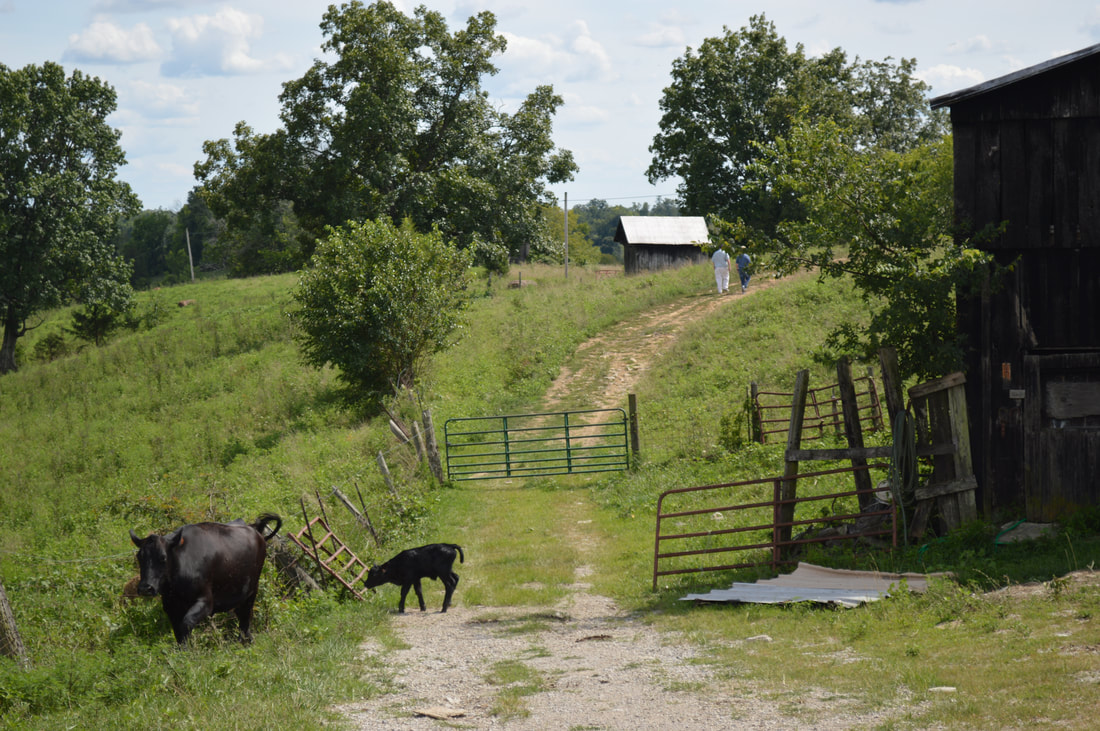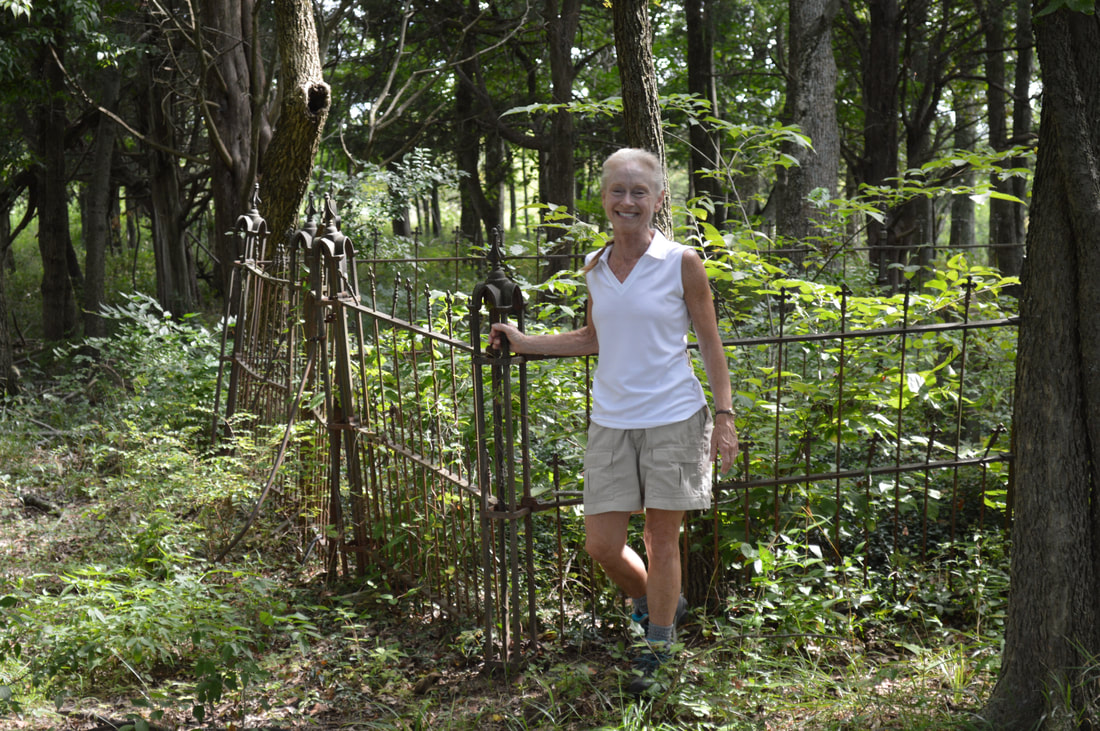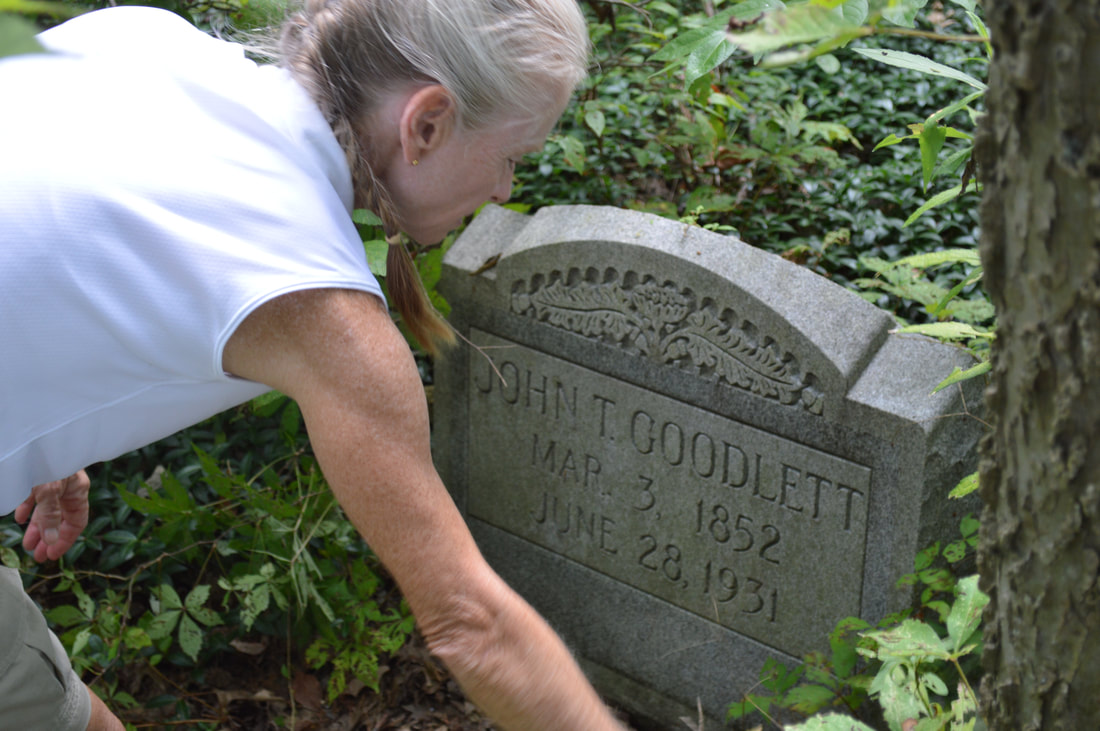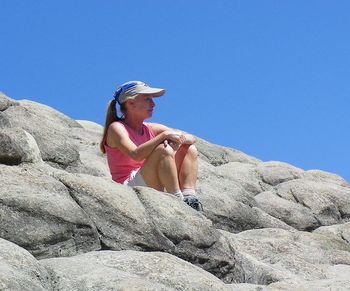|
As we stood at the gate to the pen holding the enormous Black Angus and her recently born calf, it would soon become clear who among us grew up on a farm. I suspect that cow outweighed all of us combined. Just how protective would she be of her baby? We were trying to find the Goodlett cemetery, which my cousin Sandy believed was somewhere on the ridge on the other side of that pen. The owners of the property—whom we did not know—were not home, but we had received the babysitter’s permission to trek across the farm. The somewhat rickety wire fence establishing the boundaries of the pen was reinforced with new, tautly strung barbed wire from top to bottom. On either side of the pen was dense vegetation—waist-high on me. The ground was deeply rutted by the cattle that had grazed there. As we were examining our options, I looked up to see Bob and Charley climbing the fence into the pen. They walked purposefully toward the other end, the mother alternately snorting at them, pawing the ground, and walking menacingly in their direction. In the end however, she chose to stay close to her calf, who was still wobbly on his feet. She let the two pass unmolested. The rest of us city slickers watched in awe. Rick and I are typically up for any adventure. And it was clear the family patriarch, Sandy, was not to be deterred. The three of us figured we had missed the opportunity to walk through the pen. The mother might have put up with that once, but we doubted she would tolerate another mob now that she was alert. We instead managed to navigate the barbed wire and drop over the fence into the deep weeds on the south side of the pen. Perhaps a hundred yards along, the three of us found a way to climb back over the well-fortified fence and join the other two. We trudged along, all secretly wondering what fool’s errand we had so gleefully undertaken. As we approached a copse of trees at the top of a small rise, we caught a glimpse of our holy grail: an elaborate wrought iron fence. We somewhat clumsily breached the wire fence strung among the trees on the exterior perimeter and soon found ourselves peering over the sturdier iron fence that protected the Goodlett family graves. The ornate crosses set at regular intervals on that fence presented yet another obstacle. With my small feet, however, I managed to get a toe-hold and hop the fence without too much trouble. Shortly thereafter, Sandy—clearly the best problem-solver in the group (take note, Lawrenceburg residents, as you choose your next mayor)—managed to pull away a part of the fence that had been secured by rope, so everyone could get a closer look. Among the opportunistic trees and weeds and errant ground cover were the gravestones of our great-grandfather and great-great grandfather and their wives. Bobwhite called out as we carefully pulled away the weeds and squinted to make out the inscriptions on the older markers. It was the highlight of a remarkable day spent traipsing across Anderson County searching for our ancestors. The graves of the Moore family—our common grandmother’s relatives—were easier to find and well-maintained, perhaps because of the prominence of her father, Rev. William Dudley Moore, a well-known minister of his era who performed hundreds of marriages and funerals in the county—including the funerals of John Thomas Goodlett and his wife, Virginia Campbell “Jennie” Goodlett, both buried in the graveyard we had just uncovered. The family of the Goodlett our grandmother married, however, was a little more obscure and, as his descendants, we know less about them. So I was ecstatic to find this burial plot and drive around a remote part of Anderson County—southwest of Lawrenceburg near Washington County—that I had never visited. This has been one of the most rewarding aspects of pulling my cousins close late in life. As we lose our siblings—or simply lose touch with them—we can invest time and emotion in that next ring of relatives, our cousins who share our DNA, childhood experiences, and family folklore. I have to think that Pud, Virginia, Vincent, and Billy—the Goodlett siblings who brought us into this world—would be happy with our efforts to get better acquainted with our ancestors and with each other. It may have been a foolhardy trek across somewhat forbidding land and past its 1,000-pound sentry, but we did indeed remain cheerful despite the rather obvious hazards. And the reward—a peek into our family’s past—far outweighed that matronly beast.
2 Comments
Rogers Barde
8/6/2018 05:59:51 pm
I love the way you developed your story - and your pictures. Well done. The stones looked good - 1931 is pretty recent, and they were made of good hard stone. You didn't say whose land the cemetery is on. A Goodlett? a relative? Landowners cannot forbid you access to your family cemetery on their property, but you have to get there, and there are hazards, mother cows not so terrible, but you had to be careful.
Reply
Sallie Showalter
8/6/2018 10:52:18 pm
Rogers, I don't believe anyone in our group knew the current landowners, but we did stop at the house and request permission to traipse across the farm. We were aware, however, that they couldn't legally prevent us from visiting our family's graveyard.I may get in touch with you about proper cleaning techniques for the older gravestones!
Reply
Your comment will be posted after it is approved.
Leave a Reply. |
Details
Archives
June 2023
Categories
All
|






 RSS Feed
RSS Feed